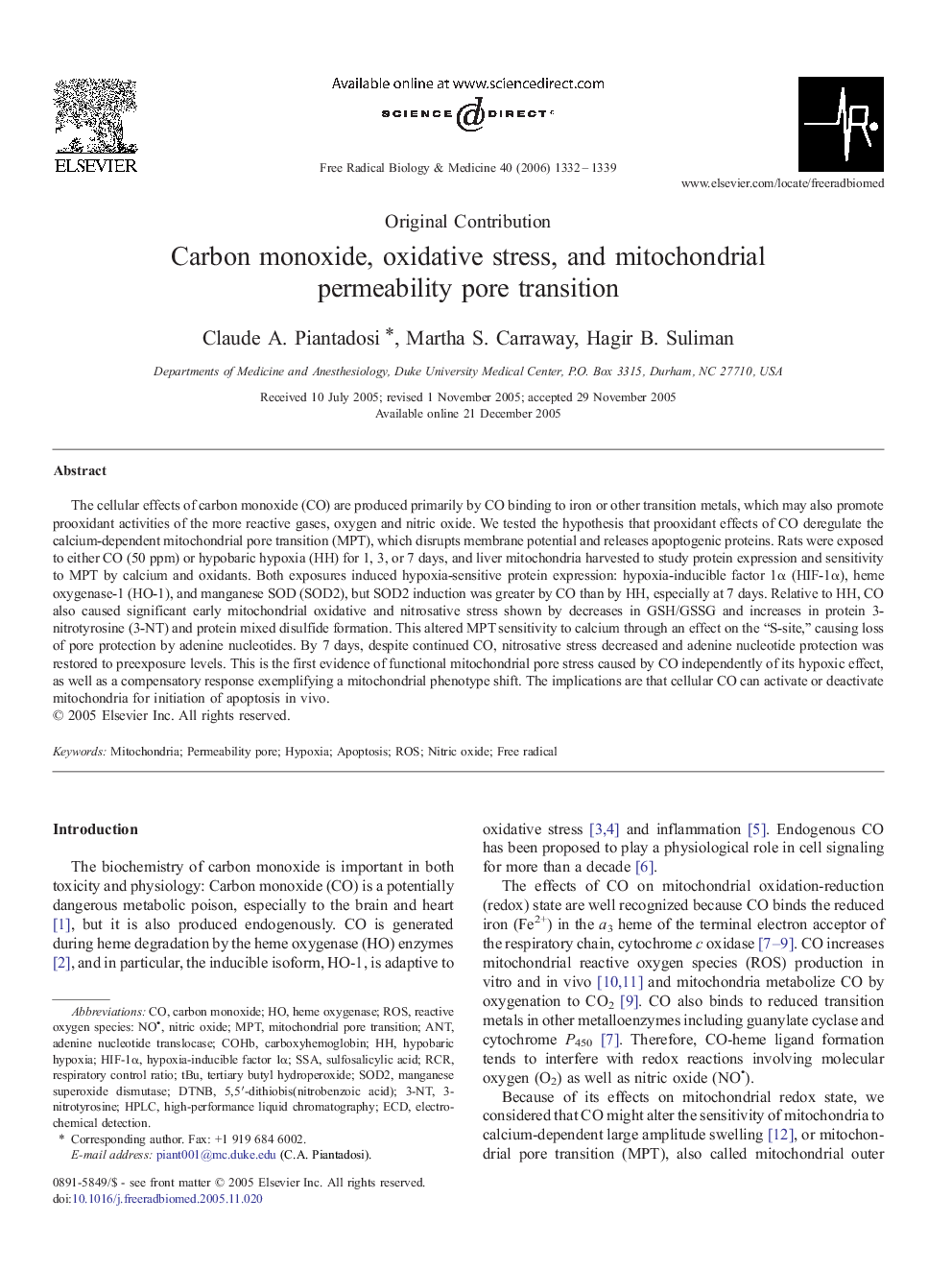| Article ID | Journal | Published Year | Pages | File Type |
|---|---|---|---|---|
| 1911580 | Free Radical Biology and Medicine | 2006 | 8 Pages |
The cellular effects of carbon monoxide (CO) are produced primarily by CO binding to iron or other transition metals, which may also promote prooxidant activities of the more reactive gases, oxygen and nitric oxide. We tested the hypothesis that prooxidant effects of CO deregulate the calcium-dependent mitochondrial pore transition (MPT), which disrupts membrane potential and releases apoptogenic proteins. Rats were exposed to either CO (50 ppm) or hypobaric hypoxia (HH) for 1, 3, or 7 days, and liver mitochondria harvested to study protein expression and sensitivity to MPT by calcium and oxidants. Both exposures induced hypoxia-sensitive protein expression: hypoxia-inducible factor 1α (HIF-1α), heme oxygenase-1 (HO-1), and manganese SOD (SOD2), but SOD2 induction was greater by CO than by HH, especially at 7 days. Relative to HH, CO also caused significant early mitochondrial oxidative and nitrosative stress shown by decreases in GSH/GSSG and increases in protein 3-nitrotyrosine (3-NT) and protein mixed disulfide formation. This altered MPT sensitivity to calcium through an effect on the “S-site,” causing loss of pore protection by adenine nucleotides. By 7 days, despite continued CO, nitrosative stress decreased and adenine nucleotide protection was restored to preexposure levels. This is the first evidence of functional mitochondrial pore stress caused by CO independently of its hypoxic effect, as well as a compensatory response exemplifying a mitochondrial phenotype shift. The implications are that cellular CO can activate or deactivate mitochondria for initiation of apoptosis in vivo.
